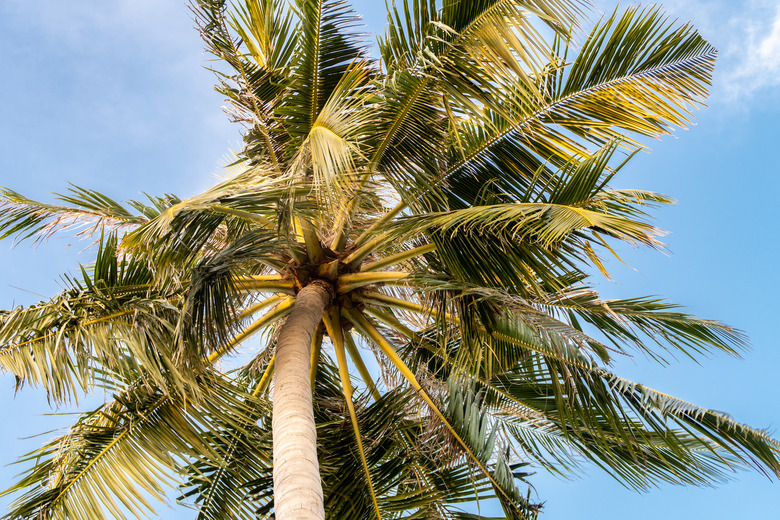What Causes Brown Spots On Palm Fronds?
We may receive a commission on purchases made from links.
What's not to like about lying on a white sand beach under rows of tightly planted palm trees (Arecaceae) swaying gently in the breeze? Well, possibly the dead palm frond adjacent to your sun bed that's covered in brown spots and looks like it's been growing mold. In fact, it has. Those brown spots on the palm frond are indicative of a palm disease, and while the tree isn't about to topple over on you, it does need maintenance and care to return it to good health.
Tip
There are several reasons palm fronds have brown spots, but the specific fungus that causes them is hard to determine with the naked eye.
Causes of Palm Frond Disease
Causes of Palm Frond Disease
Leaf spots are caused by fungi, but which type of fungus is difficult to determine with the naked eye. The spots are circular or elongated and can be oily to the touch. The fungi produce spores that are carried by wind, water, birds and insects, and young palms are particularly susceptible. Water is the likely culprit in spreading the spores since it's vital to the germination and infection of spores on the leaves, so be sure to redirect automated irrigation to bypass the palm fronds. Clemson Cooperative Extension suggests that, if the leaf spots are particularly abundant, it's good to use a copper-infused fungicidal spray.
Your infected palm fronds may be suffering from false smut or Graphiola. If the spot is found on both sides of the frond leaf and looks like tiny ants covering it, and if there is extensive humidity, the spots are probably caused by false smut. When trees are planted close together and don't get ample air circulation around them, the spots occur. Selected removal of the fronds should cure the smut, but don't chop off too many or the tree itself will suffer. If it's not too late and the tree is still in its growing stage, replant the tree at a greater distance to allow the wind to pass through its leaves.
Addressing Nutritional Deficiencies
Addressing Nutritional Deficiencies
The University of Florida IFAS Extension recommends getting rid of nutritional deficiencies first when targeting the cause of the spots. Sandy soils leach potassium, and that causes the tree to have yellow to orange spots accompanied by black spotting. Palm trees need potassium, and fertilizing them with the potassium level higher than the nitrogen content should be sufficient if the soil is sandy.
The balance between potassium and magnesium must be maintained, so fertilize with potassium sulfate along with magnesium. The affected fronds won't regenerate, but new fronds should appear healthy. Lack of iron also causes brown spots, so, to be sure about what's causing the spots, have the soil tested.
Using Fungicide Treatments
Using Fungicide Treatments
Before spraying a fungicide on the palm fronds, do the soil testing to be sure the disease is not a nutritional problem. While fungicide doesn't cure the brown spots, it does prevent the disease from spreading. Prune all infected leaves before spraying the fungicide, but not until the cause of the spots is determined. You don't want to spray if it isn't necessary.
